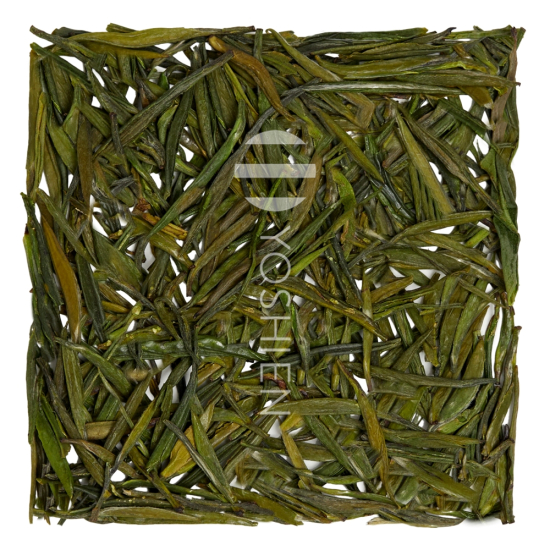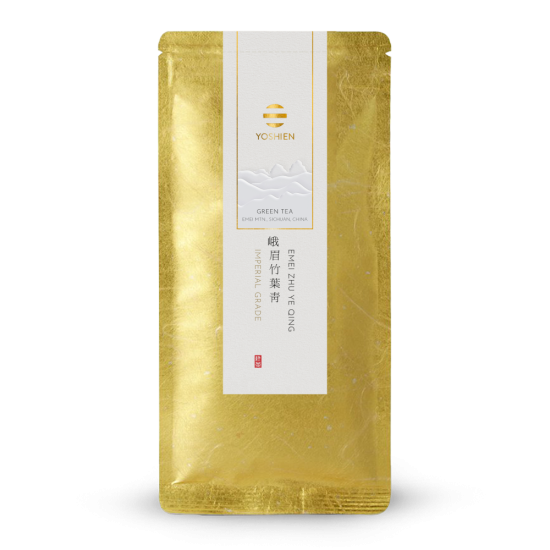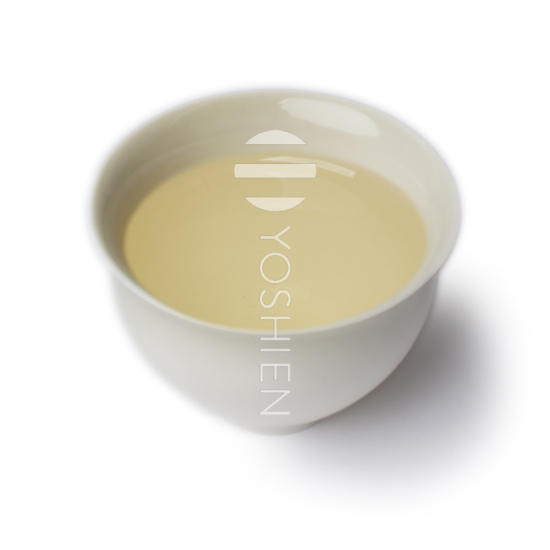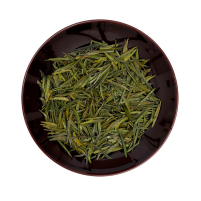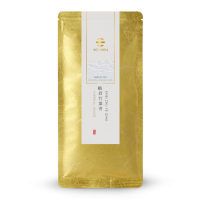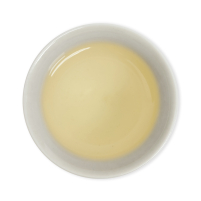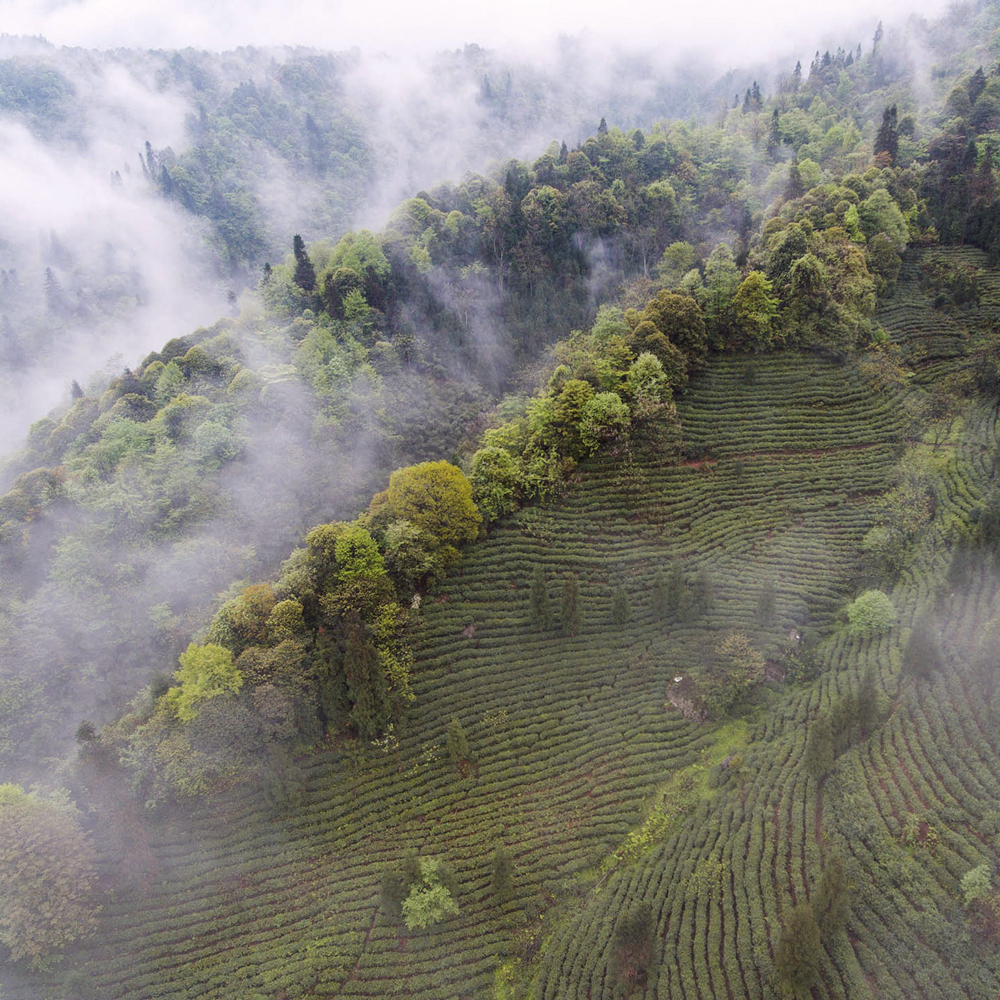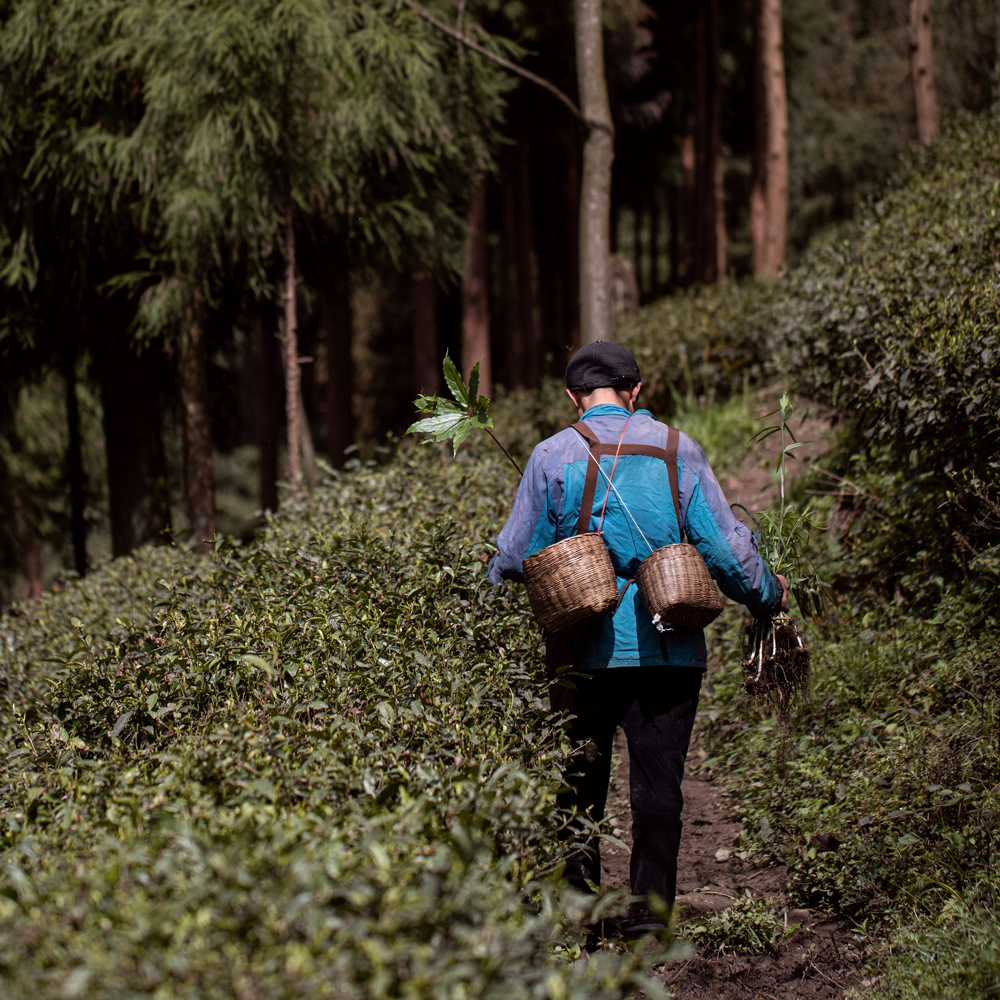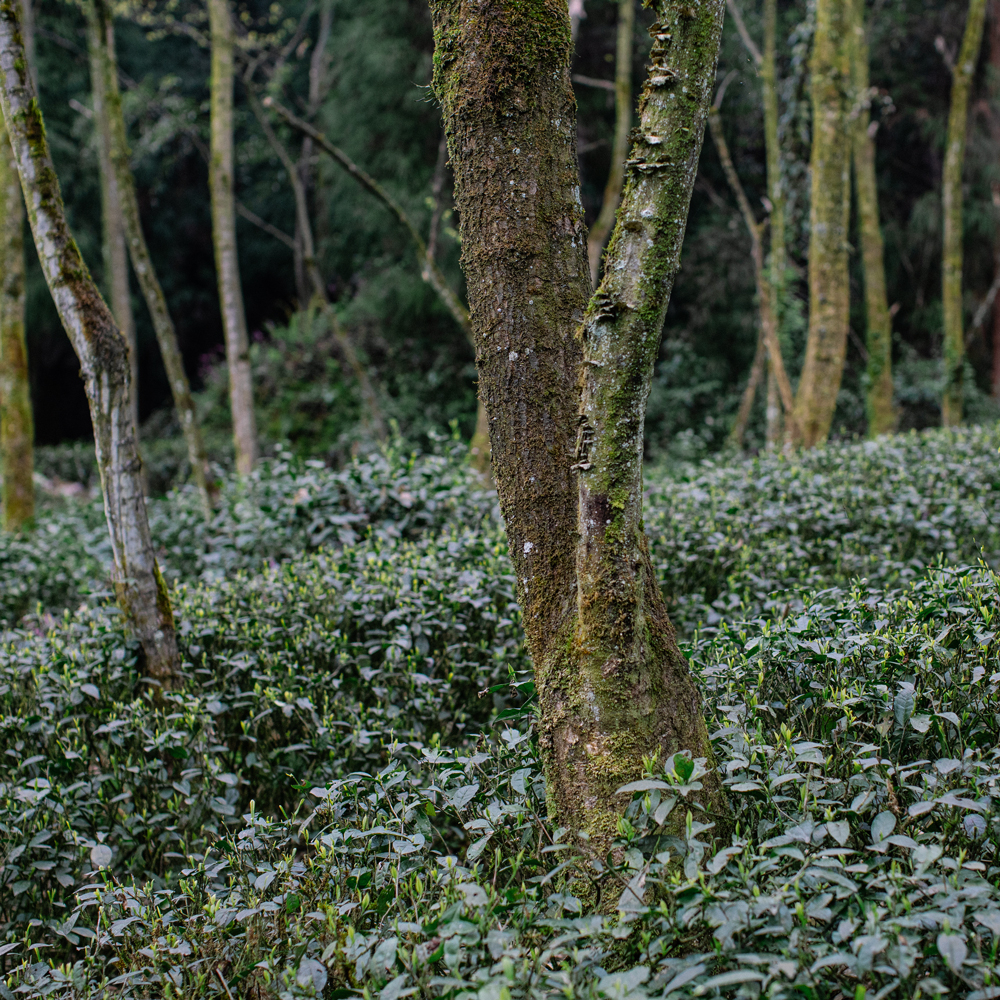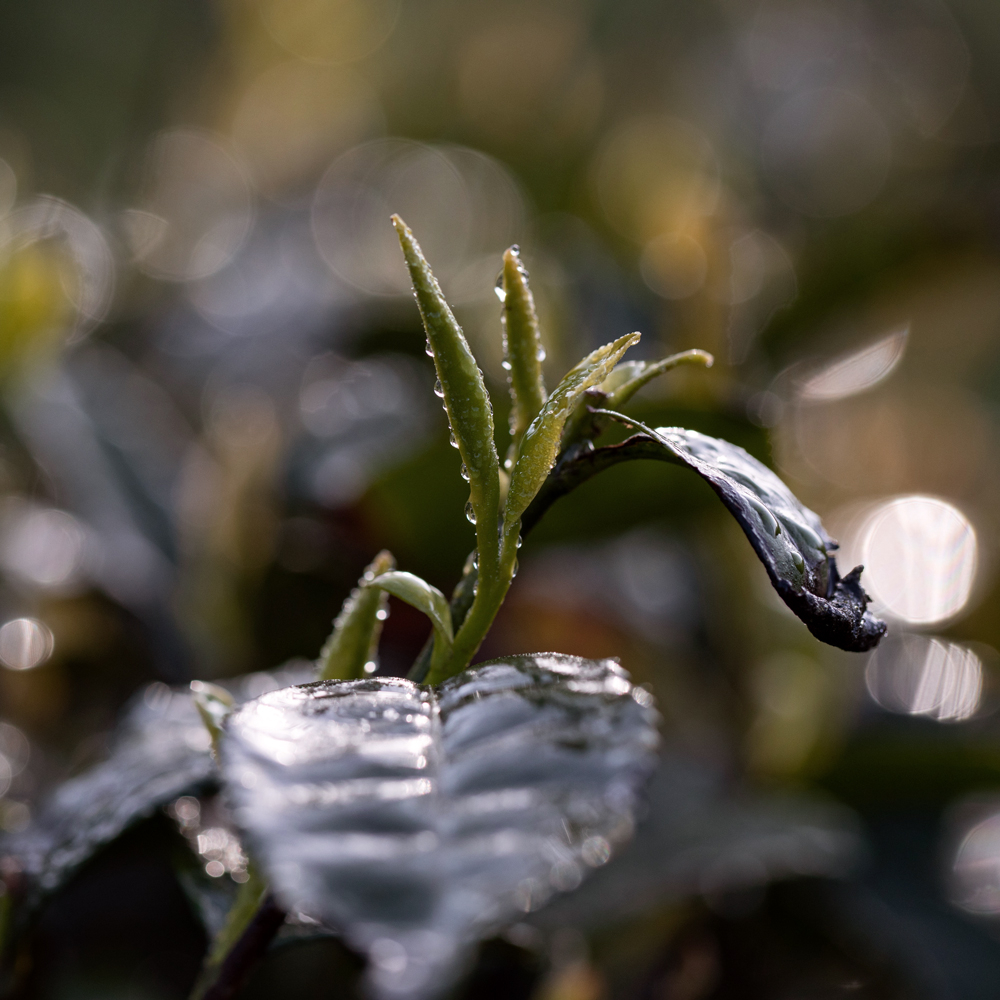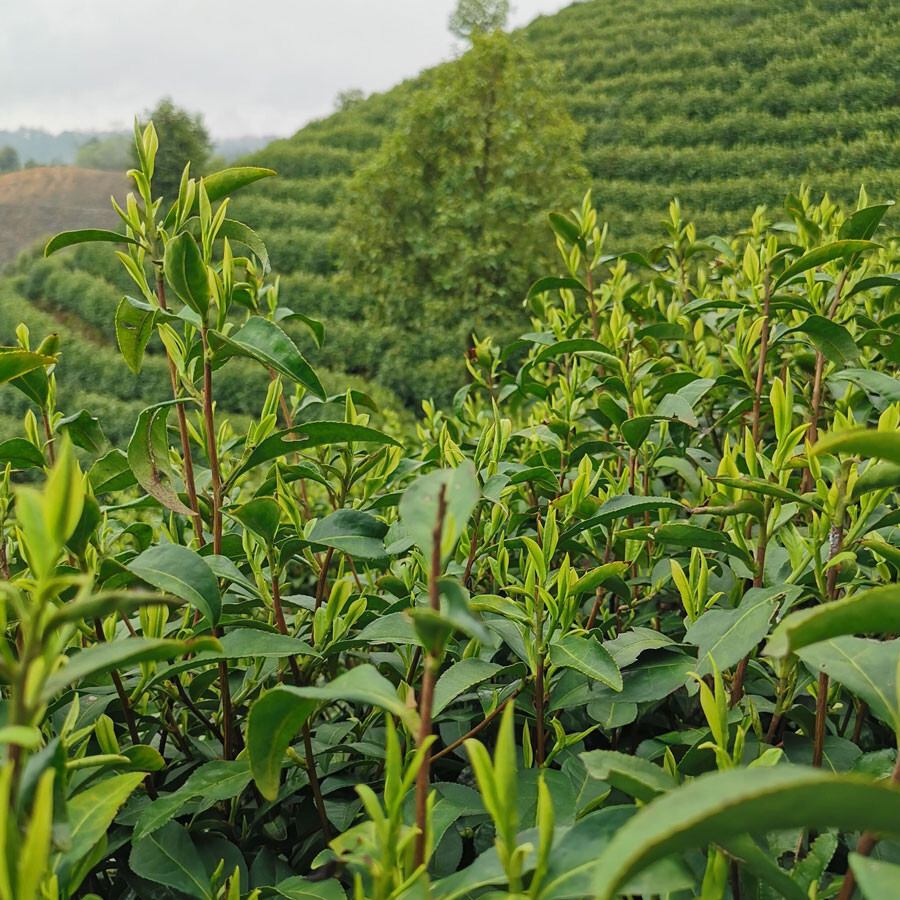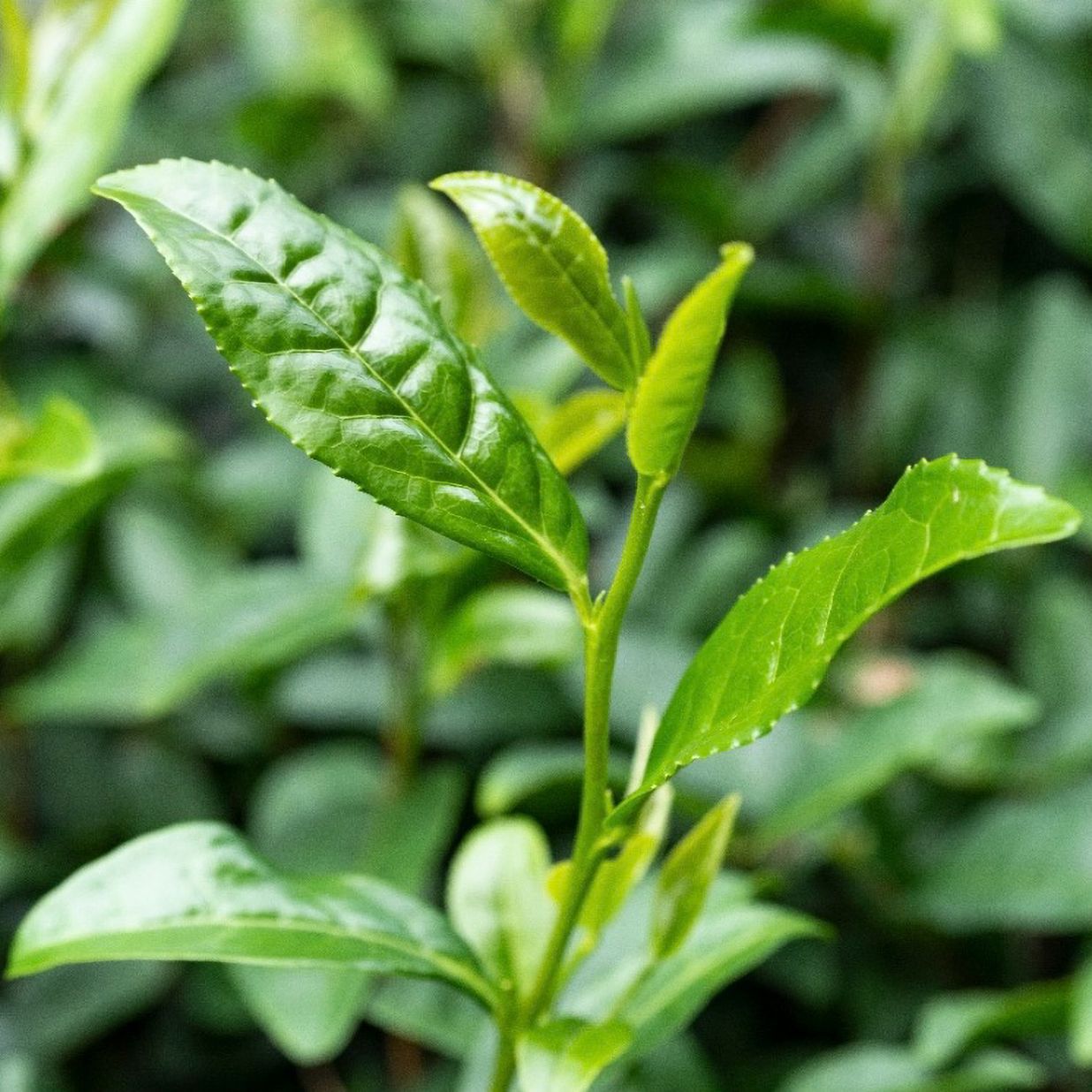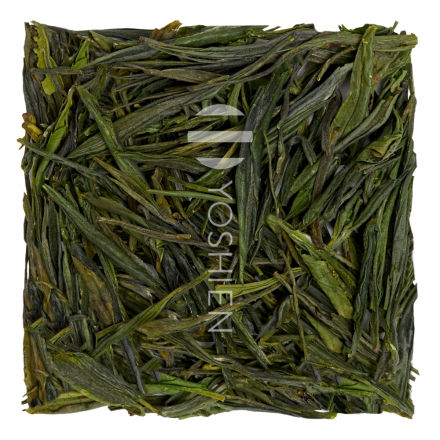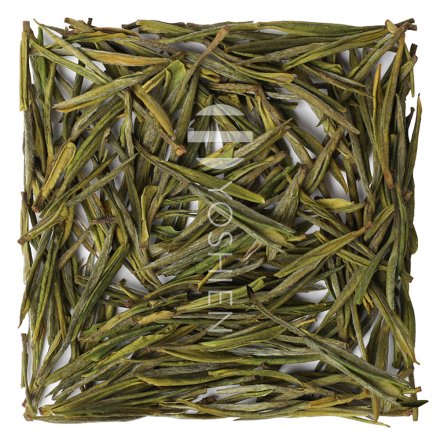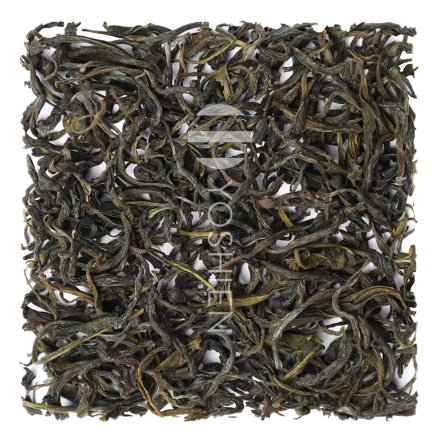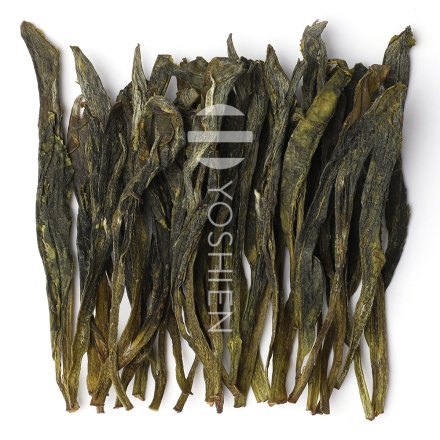Special features in location, cultivation and processing
The Terroir
Emei Shan (Mount Emei) is one of China’s most famous and sacred mountains, located in Sichuan Province. As one of the country’s four sacred Buddhist mountains, it holds deep religious and cultural significance while also being a place of extraordinary natural beauty. Emei Shan was recognised as a UNESCO World Heritage Site in 1996.
The mountain range is renowned for its diverse landscape, featuring deep valleys and mist-covered peaks at an elevation of 3,100 metres. This high altitude, combined with its proximity to subtropical climate zones, creates a truly unique terroir. The frequent mist enveloping the mountain protects tea plants from excessive sunlight while providing ample moisture. Meanwhile, the cool temperatures at higher elevations slow the maturation of tea leaves, allowing them to develop complex flavours and nutrients. These are further enhanced by the mineral-rich soil of Emei Shan.
Harvesting and Processing
One of the most remarkable qualities of this tea is that its buds come from a single annual harvest, which traditionally takes place by hand at the end of March. Only the finest buds are carefully selected to ensure the highest quality.
After harvesting, the buds first undergo a withering phase in order to soften them and reduce their moisture. This is followed by Sha Qing ("Kill Green"), where the buds are briefly heated to halt enzyme activity and prevent oxidation. Traditionally, tea roasting takes place in large woks at temperatures between 150 and 200°C. The tea then enters a resting phase to allow the flavours to develop. In the next stage, known as "fine-tuning", an experienced tea master carefully assesses the aroma and moisture content. If necessary, an additional round of heating is carried out to achieve the perfect balance. After another resting period, the buds undergo final drying in an oven to further reduce moisture and ensure the tea’s quality. This drying process occurs in multiple stages: initially, a faster drying phase at higher temperatures, followed by a slower drying phase at lower temperatures to achieve the ideal dryness and crispness.



